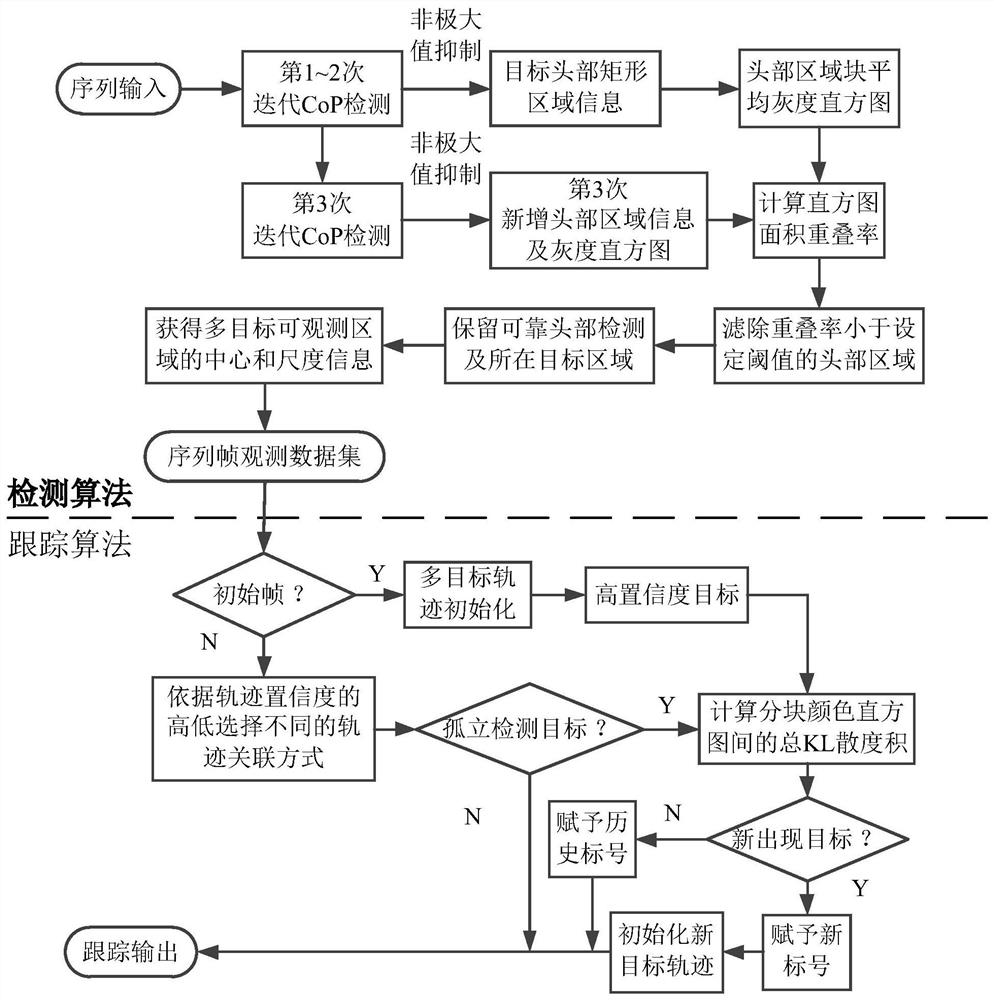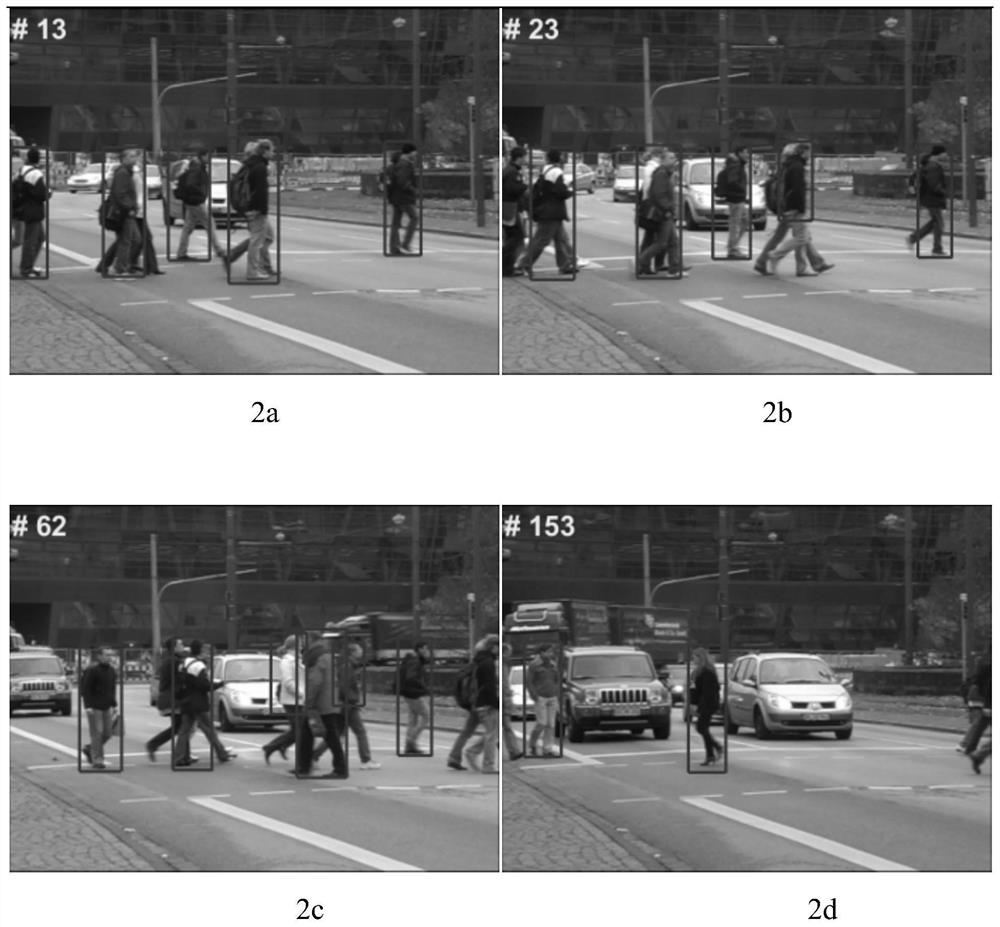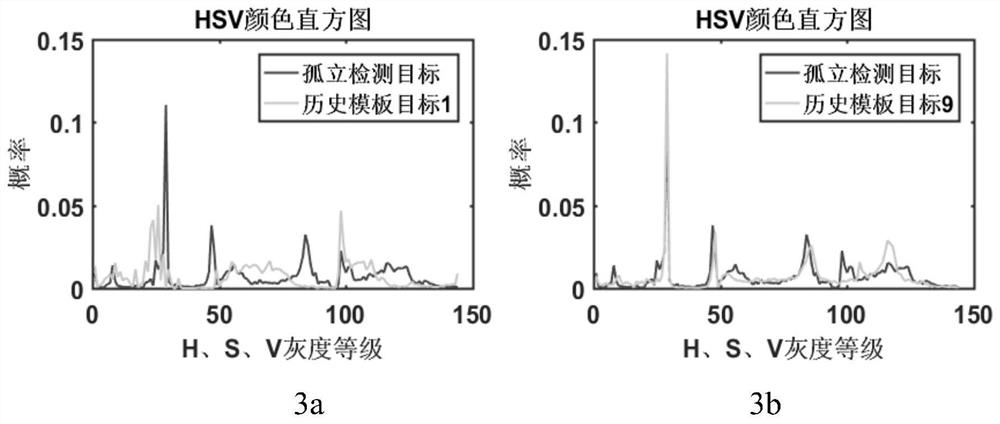A Multi-Pedestrian Tracking Method Based on Iterative Filtering and Observation Discrimination
A pedestrian tracking and iterative filtering technology, applied in the field of computer vision, can solve problems such as trajectory misjudgment, reduced tracking performance, and target identity confusion, and achieve the effect of improving detection accuracy and tracking performance
- Summary
- Abstract
- Description
- Claims
- Application Information
AI Technical Summary
Problems solved by technology
Method used
Image
Examples
Embodiment Construction
[0027] The present invention will be further described below in conjunction with the accompanying drawings. The following examples are only used to illustrate the technical solutions of the present invention more clearly, and cannot be used to limit the protection scope of the present invention.
[0028] This embodiment provides a multi-pedestrian tracking method based on iterative filtering and observation discrimination, including the following steps:
[0029] In the first step, three iterations of component combination detection are used to reduce the missed detection rate; after the iterative detection is completed, the multi-target detection results are initially obtained through non-maximum suppression and iterative filtering.
[0030] The first iteration: use the component combination algorithm to detect the sequence image, set Ω i =(x i ,y i ,w i ,h i ) is a set of detection results, target i=1,2,...,Q,x i , y i is the coordinate of the center point of the recta...
PUM
 Login to View More
Login to View More Abstract
Description
Claims
Application Information
 Login to View More
Login to View More - R&D
- Intellectual Property
- Life Sciences
- Materials
- Tech Scout
- Unparalleled Data Quality
- Higher Quality Content
- 60% Fewer Hallucinations
Browse by: Latest US Patents, China's latest patents, Technical Efficacy Thesaurus, Application Domain, Technology Topic, Popular Technical Reports.
© 2025 PatSnap. All rights reserved.Legal|Privacy policy|Modern Slavery Act Transparency Statement|Sitemap|About US| Contact US: help@patsnap.com



